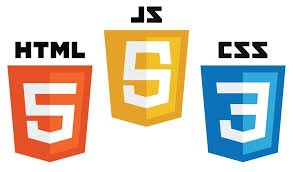Adapting to New Web Standards: HTML5 and CSS3
Adapting to New Web Standards: HTML5 and CSS3As the web continues to evolve, staying updated with the latest standards is crucial for developers aiming to enhance site functionality and user experience. HTML5 and CSS3 represent significant advancements in web development, offering new features that streamline coding, enhance design capabilities, and improve cross-platform compatibility. This post brought to you by Tradie Developers explores the importance of adapting to these modern web standards, detailing their benefits to developers working on tradie websites and end-users. By embracing HTML5 and CSS3, developers can build more responsive, accessible, and efficient websites that stand out in today’s digital landscape.
Understanding HTML5
HTML5 is the latest evolution of the HTML standard, which governs web content. It introduces a range of features that enhance the functionality and interactivity of websites. Key features include semantic elements like <article>, <section>, and <nav>, which help structure content more meaningfully. HTML5 also simplifies multimedia integration, allowing for native audio and video embedding without third-party plugins through <audio> and <video> elements. Additionally, it expands form capabilities with new input types and attributes that enhance form validation and user interaction.
For developers and users alike, HTML5 improves accessibility by ensuring that web pages are more understandable for assistive technologies. It also supports cross-platform compatibility, making it easier to create consistent experiences across desktop and mobile browsers. These advancements collectively enhance the overall user experience, allowing for more dynamic and rich web applications.
Exploring CSS3
CSS3, the latest version of the Cascading Style Sheets language, introduces a multitude of enhancements that elevate web design to new levels of interactivity and aesthetics. Notably, CSS3 offers advanced features like animations and transitions, which allow developers to add smooth and visually appealing effects to web elements without relying on heavy JavaScript or third-party plugins. Additionally, CSS3 introduces the flexible box layout, commonly referred to as Flexbox, which simplifies the creation of dynamic layouts that adjust seamlessly across different screen sizes.
These advancements significantly impact design and usability. CSS3’s capabilities enable more dynamic, responsive designs, ensuring websites look and perform well on a variety of devices and resolutions. This flexibility improves user engagement by providing a consistent experience across all platforms, ultimately enhancing both the aesthetic appeal and functionality of websites. These features make CSS3 an invaluable tool for developers aiming to create modern, user-friendly web environments.
Integrating HTML5 and CSS3 into Existing Websites
Integrating HTML5 and CSS3 into existing websites can significantly enhance their functionality and design but comes with its own set of challenges. One major hurdle is browser compatibility. Older browsers may not fully support all features of HTML5 and CSS3, leading to inconsistent user experiences. Additionally, refactoring older code to accommodate new standards can be time-consuming and complex, requiring careful planning to avoid breaking existing functionality.
To overcome these challenges, here’s a step-by-step integration process:
- Assessment: Evaluate the current website’s codebase to identify components that will benefit most from HTML5 and CSS3 features.
- Gradual Implementation: Start by integrating HTML5 and CSS3 in less critical parts of the website to minimise impact. For instance, begin with simpler CSS3 styles or HTML5 semantic elements.
- Testing for Compatibility: Use tools like BrowserStack to test the website’s new features across different browsers and devices. This ensures that all users have a consistent experience regardless of their browser version.
- Validation: Leverage validation tools such as the W3C validator to ensure that the code meets web standards and is free from errors.
- Iterative Refinement: Collect feedback on the new features and make adjustments as necessary. Continuously refine the integration to improve performance and user experience.
Maximising SEO and Accessibility with HTML5 and CSS3
SEO Benefits: HTML5 and CSS3 offer distinct advantages for search engine optimisation (SEO). The clearer semantic structure provided by HTML5 helps search engines better understand the content of a webpage, potentially boosting its rankings. For example, using specific tags like <header>, <footer>, <article>, and <section> can help define the importance and relevance of webpage content.
Enhancing Accessibility: Accessibility is greatly improved with HTML5, as its semantic elements create a more navigable structure for assistive technologies, like screen readers. CSS3’s media queries enhance this further by allowing the creation of responsive designs that adapt to various devices, ensuring that all users, regardless of device or ability, have a consistent and accessible experience.
Adopting HTML5 and CSS3 is essential for any modern website looking to enhance functionality, design, and overall user experience. These standards introduce a wealth of features that support more responsive layouts, richer media handling, and improved semantic content that is both SEO-friendly and accessible.
By integrating HTML5 and CSS3, developers can ensure their sites are equipped to meet the demands of today’s diverse web environment. Embracing these technologies not only future-proofs your projects but also opens up new possibilities for innovation and user engagement, making it a crucial step for any web development endeavour.






